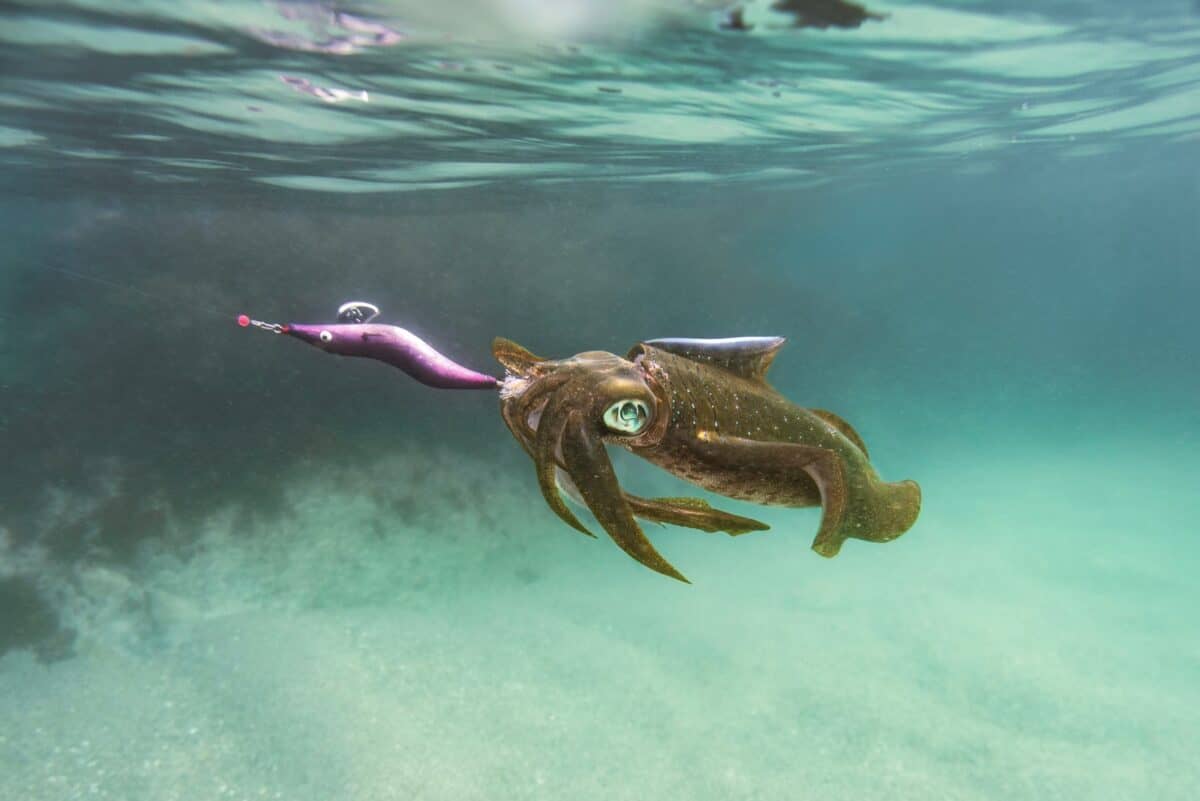When we think of flying animals, birds and bats typically come to mind. However, beneath the ocean’s surface lurk remarkable creatures that have evolved their own methods of becoming temporarily airborne. Flying fish and certain species of squid have developed extraordinary adaptations that allow them to break free from their watery domain and soar through the air, creating one of nature’s most spectacular displays. These marine aerialists have perfected techniques that serve both as survival mechanisms and efficient modes of transportation. This article explores the fascinating biology, behavior, and evolutionary significance of these extraordinary ocean dwellers that have conquered both water and air.
The Evolutionary Marvel of Flying Fish
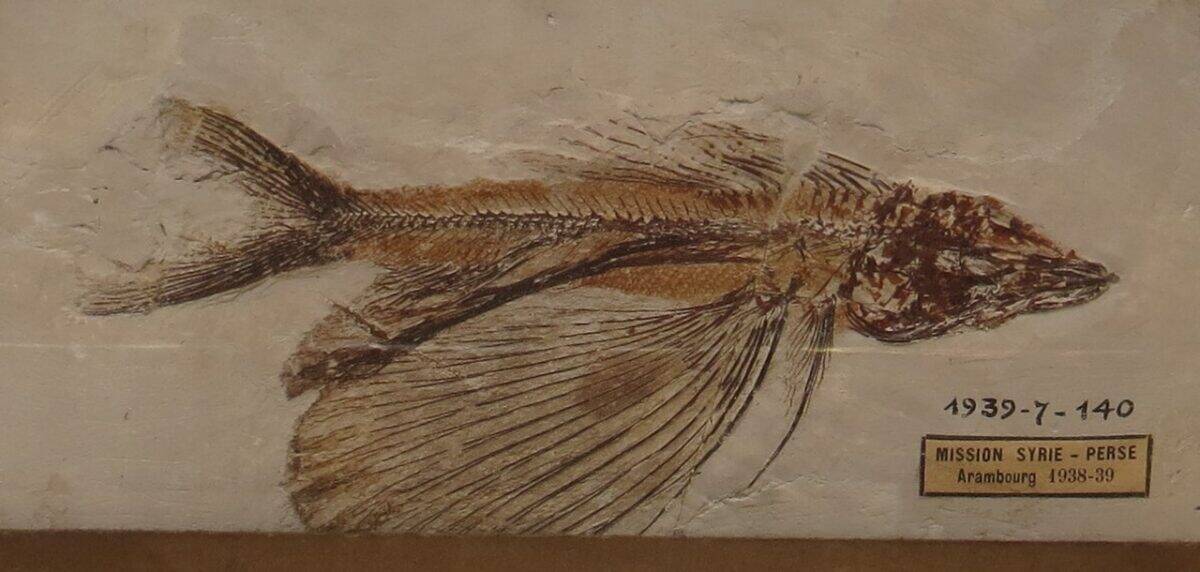
Flying fish belong to the family Exocoetidae, comprising about 40 species distributed throughout tropical and subtropical ocean waters worldwide. Their remarkable ability to glide above the water’s surface represents a textbook example of evolutionary adaptation. Over millions of years, these fish developed elongated pectoral fins that function effectively as wings when extended. The evolution of this trait wasn’t random but a direct response to predatory pressure. By launching themselves into the air, flying fish could escape aquatic predators that couldn’t follow them above the surface. Fossil records suggest that the flying fish’s gliding adaptation began developing at least 65 million years ago, with the modern form appearing approximately 15 million years ago. This evolutionary timeline coincides with the radiation of many of their primary predators, including tuna and dolphins.
Anatomy Built for Flight
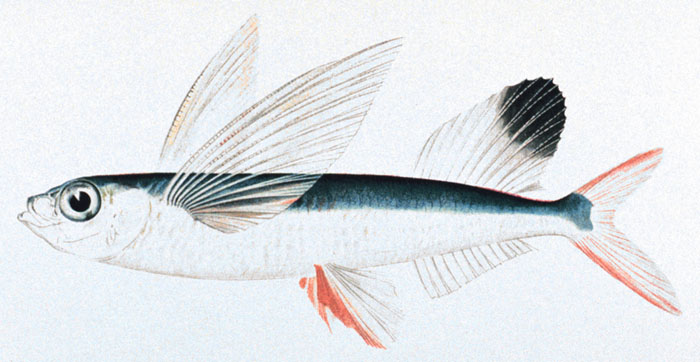
The flying fish’s body is perfectly engineered for its remarkable aerial feats. Most species grow to about 7-12 inches (18-30 cm) in length and possess a torpedo-shaped body that minimizes drag both in water and air. Their most distinctive feature is their greatly enlarged pectoral fins, which can span up to 70% of their body length. These fins contain a rigid anterior edge with a flexible membrane stretched between specialized fin rays, creating an airfoil similar in function to an airplane wing. Some species of flying fish, known as four-wingers, have also developed enlarged pelvic fins that provide additional lift and stability during flight. Another crucial adaptation is their unevenly forked tail fin (caudal fin), with the lower lobe being significantly longer than the upper lobe. This adaptation enables them to generate the tremendous speed needed for takeoff by rapidly vibrating the tail while the body remains mostly out of the water.
The Physics of Fish Flight
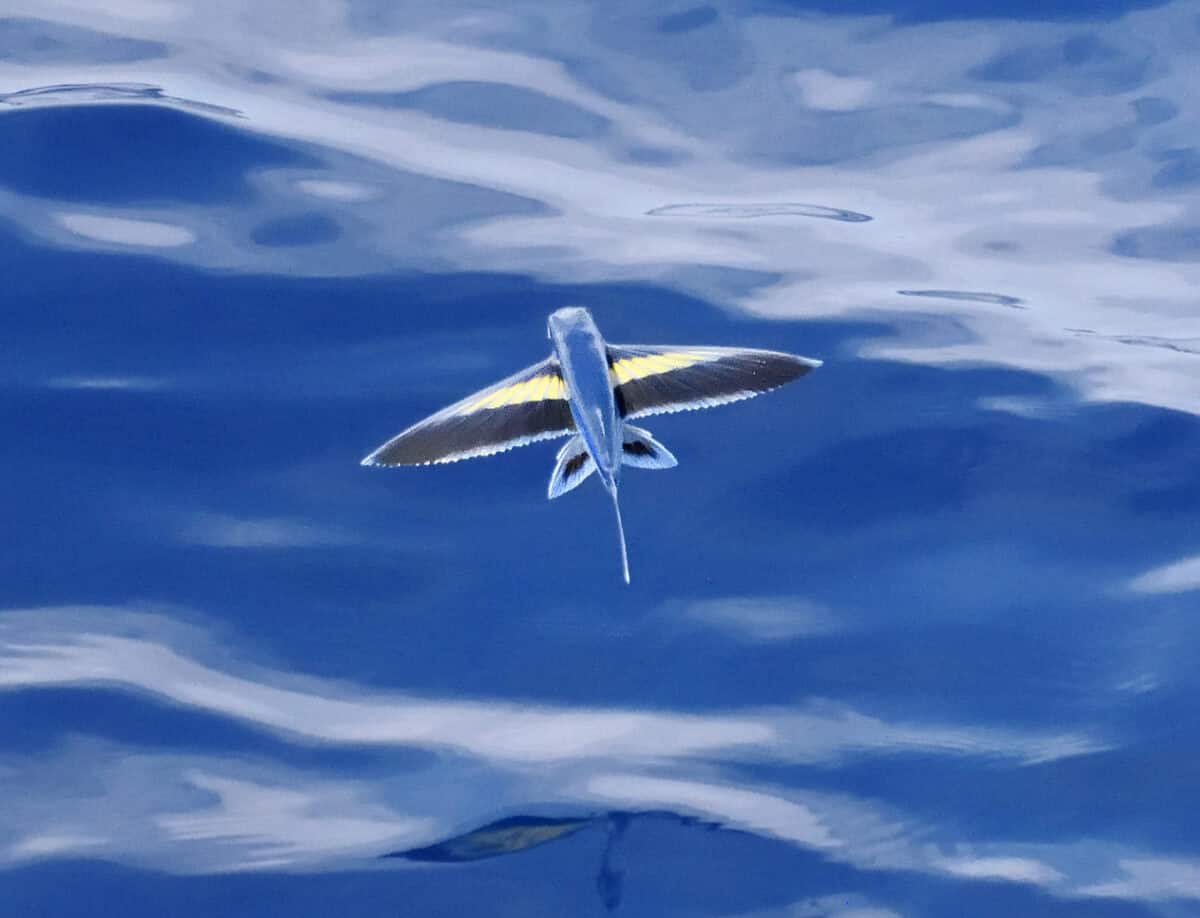
The airborne journey of a flying fish is a masterclass in applied physics. The process begins underwater, where the fish builds momentum by swimming at speeds approaching 37 mph (60 km/h). As it approaches the surface, it angled its body upward, simultaneously extending its specialized pectoral fins. Upon breaking the surface, the fish uses its still-submerged tail fin to propel itself further, sometimes vibrating it up to 50 times per second in a motion called “taxiing.” Once fully airborne, the fish glides on air currents, often reaching heights of 4-6 feet (1.2-1.8 meters) above the water’s surface. Scientific studies have demonstrated that flying fish achieve greater distance by gliding close to the water due to a phenomenon called “ground effect,” where air between the fish and the water surface gets compressed, providing additional lift. The most impressive flights can cover distances of up to 650 feet (200 meters) and last for 30-45 seconds. Some species can even perform consecutive glides by dipping their tail back into the water to regain momentum, essentially “skipping” across the ocean surface.
Species Diversity Among Flying Fish

The Exocoetidae family showcases remarkable diversity in its 40+ species. The Japanese flying fish (Cypselurus agoo) is among the largest, reaching lengths of up to 15 inches (38 cm). The tropical two-wing flying fish (Exocoetus volitans) has a nearly circumglobal distribution and is characterized by its impressive pectoral fins and relatively smaller body. The California flying fish (Cypselurus californicus) is notable for being one of the few species found in cooler temperate waters. Perhaps most remarkable are the four-winged flying fish species from the genus Hirundichthys, which have evolved both enlarged pectoral and pelvic fins, giving them superior gliding capabilities with increased stability and maneuverability. Different species have also adapted to various ecological niches, with some preferring coastal waters while others exclusively inhabit the open ocean. This diversity reflects the evolutionary success of the flying fish’s aerial adaptation across different marine environments and has allowed these remarkable fish to colonize virtually all suitable warm-water habitats worldwide.
The Surprising World of Flying Squid
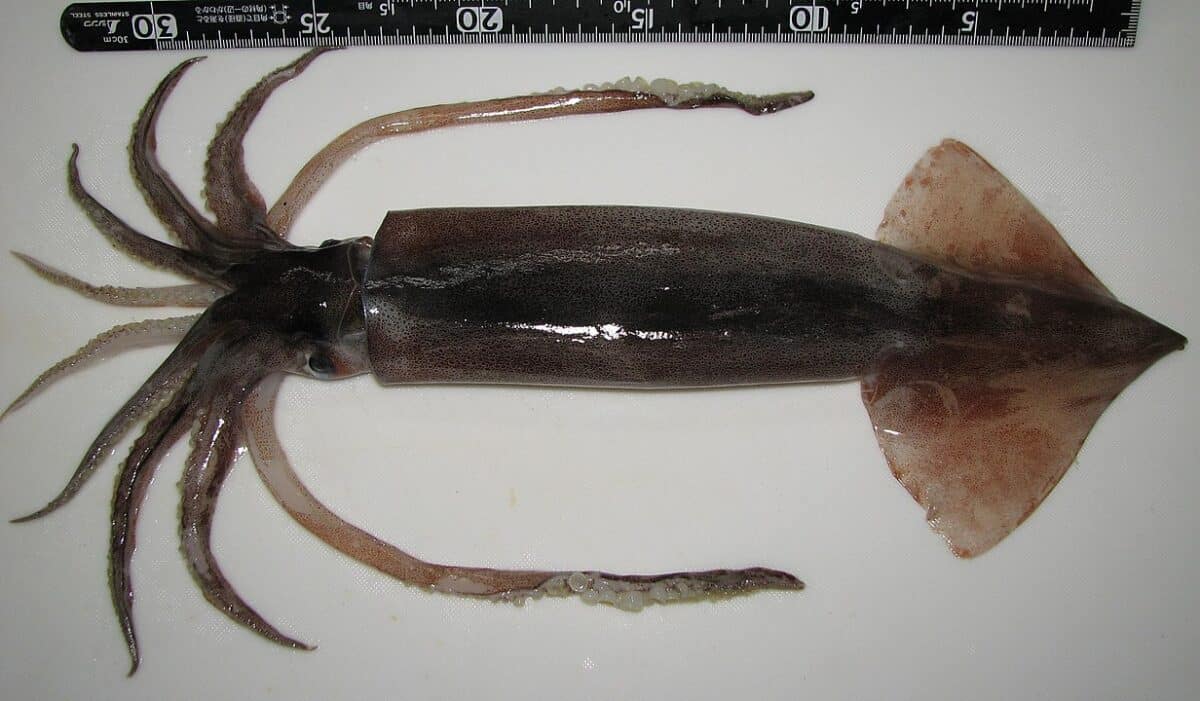
Perhaps even more astonishing than flying fish are certain squid species that have independently evolved the ability to propel themselves through the air. The most accomplished aerial squid is the Japanese flying squid (Todarodes pacificus), though several species from the family Ommastrephidae demonstrate this behavior. Unlike flying fish, which primarily glide, flying squid actively propel themselves using jet propulsion. They forcefully eject water from their mantle cavity through a specialized funnel, generating thrust that can launch them several meters above the water’s surface. Once airborne, they extend their tentacles forward and their arms behind them, creating an aerodynamic form reminiscent of a rocket. Remarkably, some species can also expel jets of water while in the air, allowing them to adjust their trajectory and potentially extend their flight. Research published in 2013 in Marine Biology documented flying squid reaching heights of up to 10 feet (3 meters) and traveling distances exceeding 100 feet (30 meters) through the air—significantly farther than previously believed possible for these invertebrates.
The Biomechanics of Squid Flight
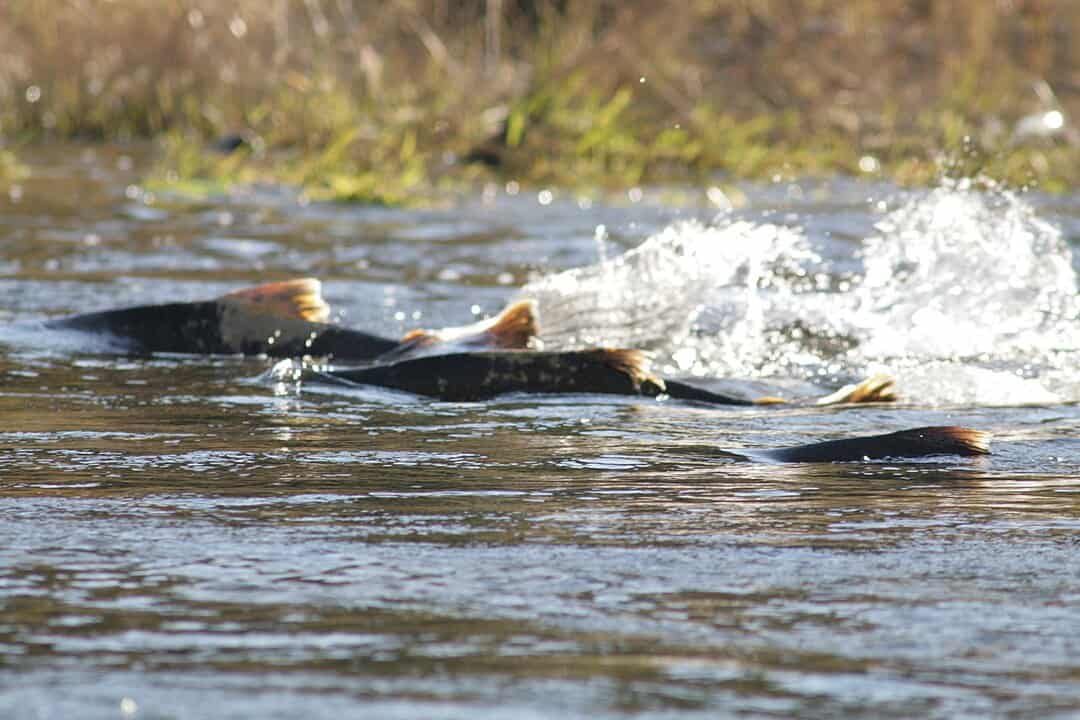
The aerial capabilities of flying squid represent a fascinating example of convergent evolution with flying fish, despite vastly different anatomical structures. While flying fish use wing-like fins to generate lift, squid employ jet propulsion combined with aerodynamic body positioning. The process begins underwater, where the squid fills its mantle cavity with water. It then contracts powerful muscles to forcefully expel this water through its siphon, creating a jet-like propulsion that can launch it from the water at speeds up to, and sometimes exceeding, 11 meters per second. Once airborne, the squid extends its eight arms and two longer tentacles in a specific configuration that optimizes its aerodynamics. The arms spread out behind the body like the tail of a paper airplane, while the tentacles extend forward, potentially helping with balance and navigation. Research using high-speed cameras has revealed that some species can even continue propelling themselves through the air by expelling additional jets of water they’ve stored in specialized cavities. This remarkable adaptation allows these cephalopods to achieve a form of powered flight, rather than mere gliding, making their aerial abilities arguably more advanced than those of flying fish from a biomechanical perspective.
Ecological Significance of Aerial Adaptations
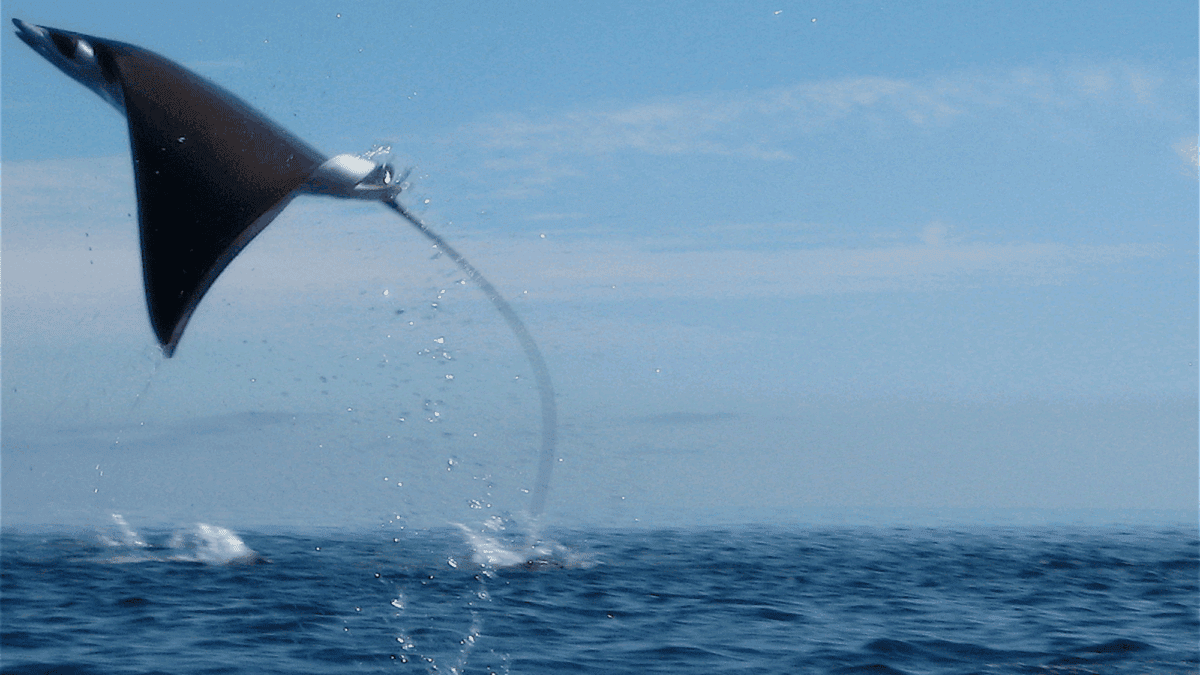
The evolution of aerial capabilities in both flying fish and squid serves critical ecological functions beyond mere spectacle. Primarily, these adaptations provide an effective escape strategy from predators. For flying fish, becoming airborne allows them to evade fast-swimming predators like tuna, mahi-mahi, and swordfish that cannot follow them above the water. Similarly, flying squid can escape aquatic predators by launching into the air. However, this strategy creates a vulnerability to aerial predators, with seabirds sometimes capitalizing on the predictable flight paths of these marine aerialists. Another significant ecological advantage is energetic efficiency. Studies have shown that flying fish use approximately 15-20% less energy when gliding through air compared to swimming the same distance underwater, owing to air’s lower resistance compared to water. This energy efficiency is particularly valuable during migrations or when covering large distances. The aerial abilities of these species also play essential roles in their reproductive strategies, with some flying fish species performing spectacular group flights during spawning seasons, potentially as part of mate selection processes. These adaptive behaviors illustrate how the boundary between aquatic and aerial environments is more permeable than commonly assumed in marine ecosystems.
Cultural Significance and Human Interactions
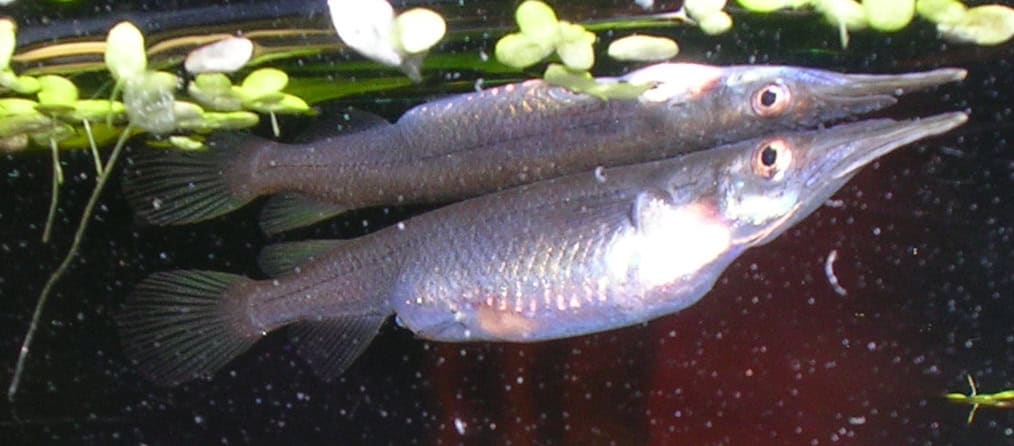
Flying fish and squid have captured human imagination for centuries, inspiring folklore, culinary traditions, and even technological innovations. In Barbados, the flying fish holds such cultural importance that it appears on the country’s coat of arms and is celebrated as the national dish when served with cou-cou (cornmeal and okra). Japanese flying squid supports one of the world’s largest squid fisheries, with annual catches exceeding 500,000 tons. These creatures have also inspired biomimetic engineering, with researchers studying their efficient locomotion strategies to develop improved underwater and aerial vehicles. Unfortunately, both flying fish and squid face growing threats from climate change and overfishing. Rising ocean temperatures are altering their traditional habitats and migration patterns, while industrial fishing practices have reduced populations in many regions. Conservation efforts are increasingly focused on these species not only for their ecological importance but also for their cultural and economic value to coastal communities worldwide. The unique adaptations of these marine aerialists continue to remind us of nature’s ingenuity and the remarkable evolutionary solutions that emerge in response to environmental challenges.
Predator-Prey Dynamics in Three Dimensions
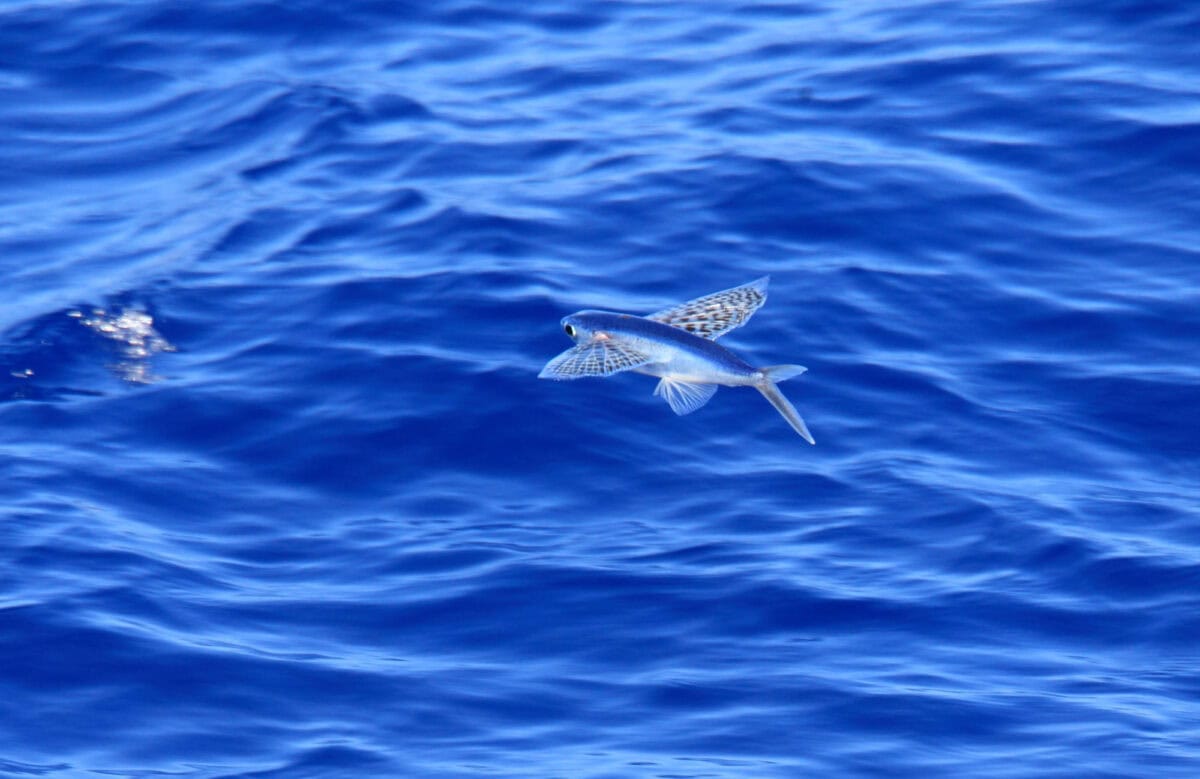
The ability to transition between water and air creates fascinating predator-prey dynamics that play out across three dimensions. Flying fish have evolved their aerial adaptations primarily as an escape mechanism from aquatic predators like tuna, dolphinfish, marlin, and mackerel. However, this solution created a new vulnerability to aerial predators such as frigatebirds, gulls, and albatrosses that have learned to target flying fish during their predictable gliding trajectories. This has led to an evolutionary arms race where some flying fish species have developed countermeasures such as erratic flight patterns and the ability to quickly change direction mid-air. Similarly, flying squid face predation from both below and above. Their jet-propelled flights allow them to escape fast-swimming predatory fish but make them temporarily vulnerable to seabirds. Some squid species have adapted by flying primarily at night when avian predation risk is lower. Perhaps most remarkable is how certain predators have evolved specialized hunting strategies specifically targeting these aerial marine creatures. The sailfish, for instance, uses its large dorsal fin to herd schools of flying fish toward the surface, limiting their escape directions and increasing capture success. These complex interactions highlight the evolutionary pressure that drove the development of these extraordinary aerial adaptations in the first place.
Scientific Research and New Discoveries

Recent scientific advances have dramatically expanded our understanding of flying fish and squid. High-speed cameras and computational fluid dynamics have revealed previously unknown aspects of their aerial mechanics. A groundbreaking 2021 study published in the Journal of Experimental Biology demonstrated that flying fish can actively control their glide path by subtle adjustments of their pectoral and pelvic fins, giving them more agency during flight than previously believed. For flying squid, research using remotely operated aerial drones has documented previously unknown behaviors, including coordinated group flights involving dozens of individuals simultaneously launching from the water—potentially a predator defense strategy. DNA analysis has also provided new insights into the evolutionary history of these species, suggesting that the flying adaptation in squid evolved independently at least three times in different lineages, representing a remarkable case of convergent evolution. Tagging studies with microelectronic sensors have tracked the movements of these species, revealing that some flying fish migrate over 600 miles annually, using their aerial abilities to conserve energy during these journeys. Scientists are also investigating how climate change may impact these species, with preliminary data suggesting that warming oceans could alter flight capabilities by affecting water surface tension and air-water temperature gradients.
Adaptations for Landing
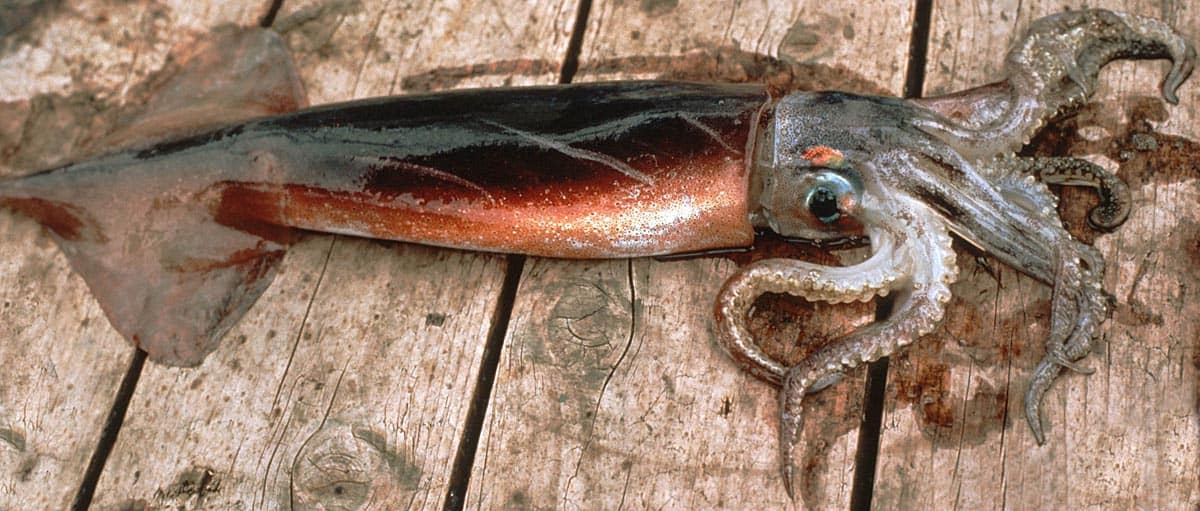
While much attention focuses on the takeoff and flight capabilities of these marine aerialists, their landing mechanisms represent equally remarkable adaptations. Flying fish have evolved specialized features for water re-entry, including their hydrodynamic body shape and the ability to fold their enlarged pectoral fins just before contact with the water surface, minimizing splash and impact force. The unevenly forked tail, with its elongated lower lobe, serves a dual purpose: it provides the initial thrust for takeoff and also enters the water first upon landing, providing stability during re-entry. Some species can even use their tail to “skip” across the water surface, extending their time above water and potentially confusing pursuing predators. Flying squid demonstrate even more sophisticated landing techniques. High-speed photography has revealed that they can reorient their body position mid-flight to achieve an optimal angle for water re-entry, typically leading with their streamlined mantle end. They also appear capable of increasing water resistance upon landing by spreading their arms and tentacles, acting as a biological brake system. Some species even eject ink just before landing when predators are nearby, creating a visual screen that obscures their entry point. These refined landing mechanisms highlight how thoroughly adapted these species are to their dual-medium lifestyle, with evolutionary refinements addressing every aspect of their aquatic-aerial transitions.
The Future of Marine Aerialists

The future of flying fish and squid faces significant challenges in our rapidly changing oceans. Climate change presents perhaps the most serious threat, as warming waters alter the temperature gradients and ocean currents these species depend on. Research suggests that rising sea temperatures could affect the viscosity and surface tension of water, potentially impacting the takeoff mechanics of both flying fish and squid. Ocean acidification, another consequence of increased atmospheric carbon dioxide, may affect the development of crucial anatomical features in larval stages. Overfishing poses an additional threat, with flying squid in particular targeted by industrial fishing operations in many parts of the world. Conservation efforts are beginning to focus on these remarkable species, with some regions implementing catch limits and protected areas. There is also increasing scientific interest in establishing long-term monitoring programs to track population changes. Despite these challenges, the evolutionary success of these marine aerialists over millions of years suggests a remarkable adaptability that may help them adjust to changing conditions. By studying their unique adaptations, scientists hope to better understand how marine species might respond to environmental changes and potentially gain insights applicable to conservation efforts for other ocean dwellers.
The remarkable adaptations of flying fish and soaring squid represent some of nature’s most innovative solutions to the challenges of marine life. These extraordinary creatures have transcended the traditional boundaries between aquatic and aerial domains, developing specialized anatomical features and behaviors that allow them to exploit the advantages of both environments. Their aerial capabilities serve multiple ecological functions, from escaping predators to conserving energy during long journeys, demonstrating how evolutionary pressures can produce seemingly improbable adaptations. As we continue to study these marine aerialists, we gain not only a deeper appreciation for nature’s ingenuity but also valuable insights that may inform biomimetic engineering and conservation strategies. In a changing world where marine ecosystems face unprecedented threats, the story of flying fish and squid reminds us of life’s remarkable resilience and adaptability—qualities that may prove crucial for their continued survival in the oceans of tomorrow.
- America’s Most Endangered Mammals And How to Help - August 9, 2025
- The Coldest Town in America—And How People Survive There - August 9, 2025
- How Some Birds “Steal” Parenting Duties From Others - August 9, 2025

